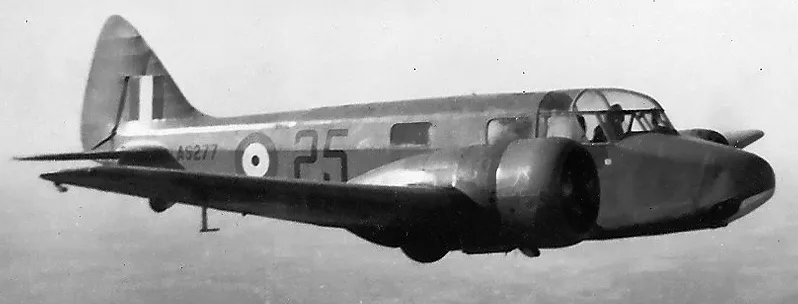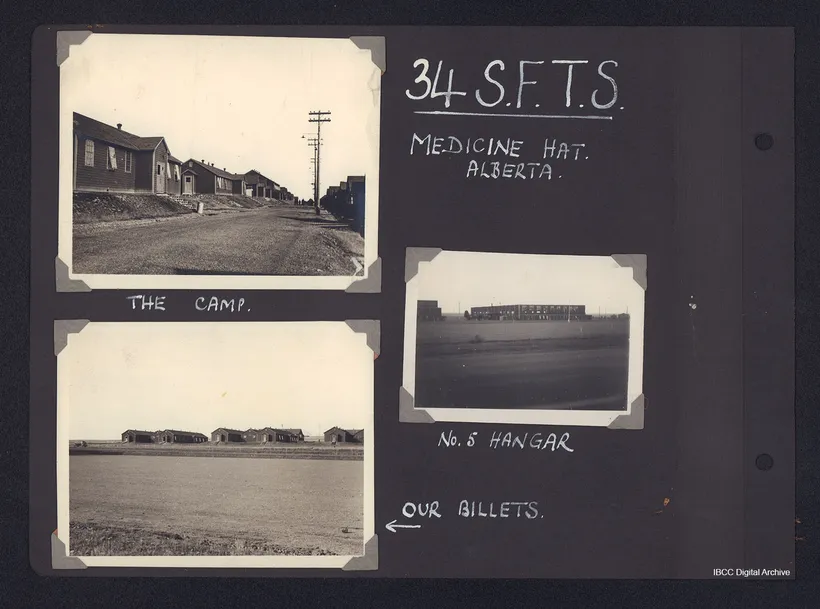Fox, Jack Arthur (Leading Aircraftman)
Killed in Flying Accident 1942-02-13


Birth Date: 1921
Born:
Son of Mr. and Mrs. Albert Arthur Fox, of Worcester Park, Surrey, England.
Home:
Enlistment:
Enlistment Date: Unknown
Service
RAF
Unit
34 SFTS- Service Flying Training School (RAF)
Base
Medicine Hat, Alberta, Canada
Rank
Leading Aircraftman
Position
Leading Aircraftman
Service Numbers
1333347
This incident involved multiple aircraft:
- Oxford Mk. I Serial: AS478
All the above aircraft in the above list are referenced in this report.
Airspeed Oxford

Airspeed A.S. 10 Oxford Mk. II, RCAF (Serial No. AS277), 25, in flight over Saskatchewan, 1942.
The Airspeed AS.10 Oxford was a twin-engine monoplane aircraft developed and manufactured by Airspeed. It saw widespread use for training British Commonwealth aircrews in navigation, radio-operating, bombing and gunnery roles throughout the Second World War.
The Oxford was developed by Airspeed during the 1930s in response to a requirement for a capable trainer aircraft that conformed with Specification T.23/36, which had been issued by the British Air Ministry. Its basic design is derived from the company's earlier AS.6 Envoy, a commercial passenger aircraft. Performing its maiden flight on 19 June 1937, it was quickly put into production as part of a rapid expansion of the Royal Air Force (RAF) in anticipation of a large-scale conflict.
As a consequence of the outbreak of war, many thousands of Oxfords were ordered by Britain and its allies, including Australia, Canada, France, New Zealand, Poland, and the United States. Following the end of the conflict, the Oxford continued to achieve export sales for some time, equipping the newly formed air forces of Egypt, India, Israel, and Yugoslavia. It was considered to be a capable trainer aircraft throughout the conflict, as well as being used a general-purpose type. A large number of Oxfords have been preserved on static display.Wikipedia
34 SFTS (34 Service Flying Training School)
Graduates of the EFTS "learn-to-fly" program went on a Service Flying Training School (SFTS) for 16 weeks. For the first 8 weeks the trainee was part of an intermediate training squadron; for the next 6 weeks an advanced training squadron and for the final 2 weeks training was conducted at a Bombing & Gunnery School. The Service schools were military establishments run by the RCAF or the RAF.
There were two different types of Service Flying Training Schools. Trainees in the fighter pilot stream went to an SFTS like No. 14 Aylmer, where they trained in the North American Harvard or North American Yale. Trainees in the bomber, coastal or transport pilot stream went to an SFTS like No. 5 Brantford where they learned multi-engine technique in an Airspeed Oxford, Avro Anson or Cessna Crane.

For More Information on RCAF Station Medicine Hat see here



 Bomber Command Museum Of Canada - 34 SFTS
Bomber Command Museum Of Canada - 34 SFTS
David Carter History Of NO34 SFTS
Project 44 BCATPOxford AS478
Oxford Mk. I AS478
To No. 4 Training Command on 9 August 1941, for use by No. 34 Service Flying Training School at Medicine Hat, Alberta. Category C damage at Holson relief field at 16:15 on 17 October 1941. Category A crash 2 miles north of Medicine Hat at 13:05 on 13 February 1942. Student pilot mismanaged fuel selector valve during cross country flight, resulting in one engine failing due to fuel starvation. Struck a telephone pole during attempted forced landing. Leading Aircraftman J.A. Fox, RAF killed. Scrapped by No. 10 Repair Depot. Had 348:25 logged time when struck off.1941-07-19 Taken on Strength Eastern Air Command at No. 1 Port Detachment 2019-08-20
1941-October-17 Accident: 34 Service Flying Training School Loc: Holsom Aerodrome Names: Hibbard
1942-February-13 Accident: 34 Service Flying Training School Loc: Medicine Hat Aerodrome Names: Fox
1942-08-18 Struck off Strength Struck off, reduced to spares and produce 2019-08-20
 Hillside Cemetery
Hillside Cemetery School Daily Diary Entry - 1942-02-13
School Daily Diary Entry - 1942-02-13 Commonwealth War Graves Commission
Commonwealth War Graves Commission www.findagrave.com
www.findagrave.com Library and Archives Canada Service Files (may not exist)
Library and Archives Canada Service Files (may not exist) Oxford Trainer
Oxford Trainer Wikipedia Oxford Trainer
Wikipedia Oxford Trainer Harold A Skaarup Web Page
Harold A Skaarup Web Page